The best bird feeders in 2024, tried and tested
Content is created by CNN Underscored’s team of editors who work independently from the CNN newsroom. When you buy through links on our site, CNN and its syndication partners may earn a commission. Learn more
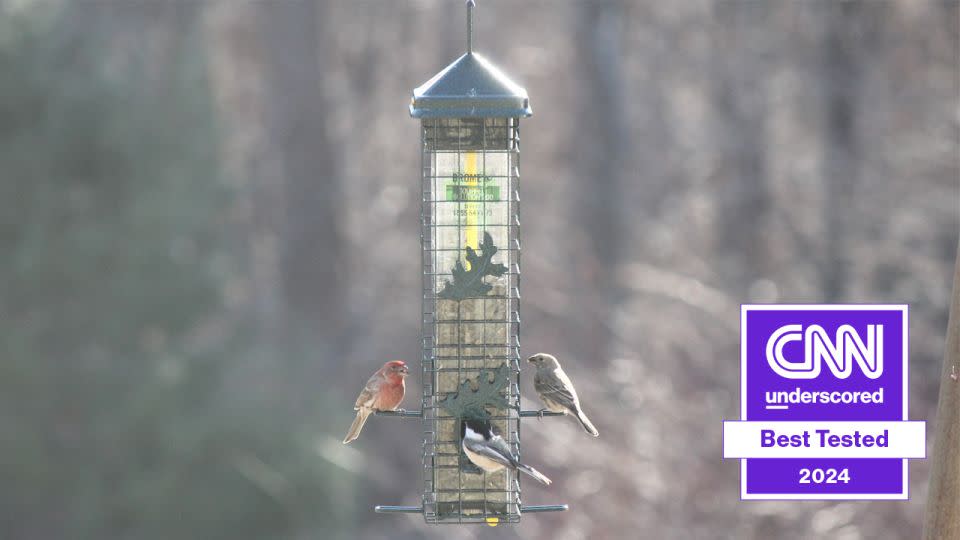
There’s something so relaxing about bird-watching from your window, watching feathered visitors chirp away as they eat from a bird feeder. No matter where you live, there are likely a variety of birds that are nearby (yes, even in cities), and you can attract them to your yard for your viewing pleasure by setting up a bird feeder or two. After all, who’s going to turn down a free meal?
To find the best bird feeders that are both effective and easy to use, we tested 10 popular models, including tube, finch and hopper feeders. We evaluated each one on how easy it was to fill, set up and clean, as well as the quality of its construction and what kinds of birds it attracted.
Brome Squirrel Solution 200
Best bird feeder
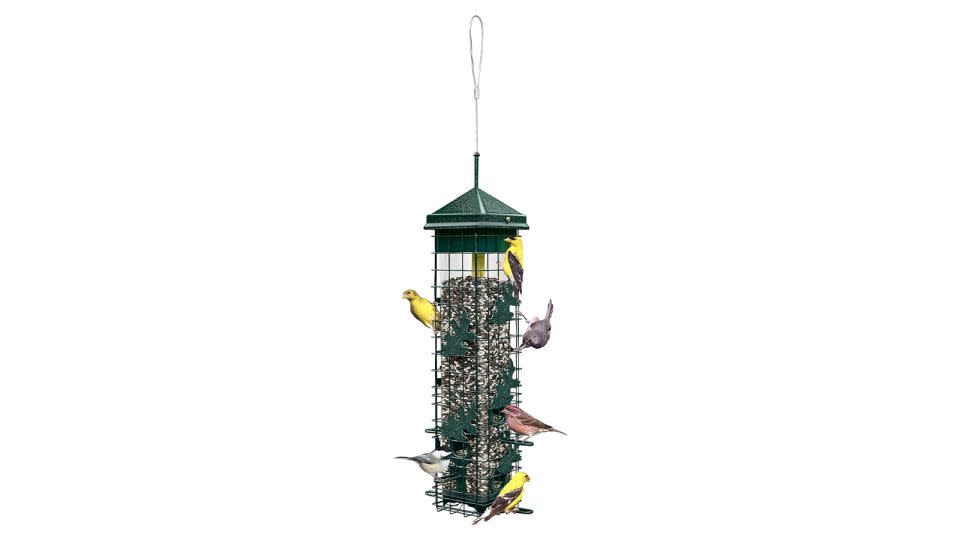
This tube-style feeder attracts a wide range of birds, from finches and chickadees to bluebirds and cardinals. It comes apart easily for thorough cleaning, and its sliding outer cage helps keep squirrels away.
Wild Birds Unlimited EcoTough Classic Feeder
Best hopper bird feeder
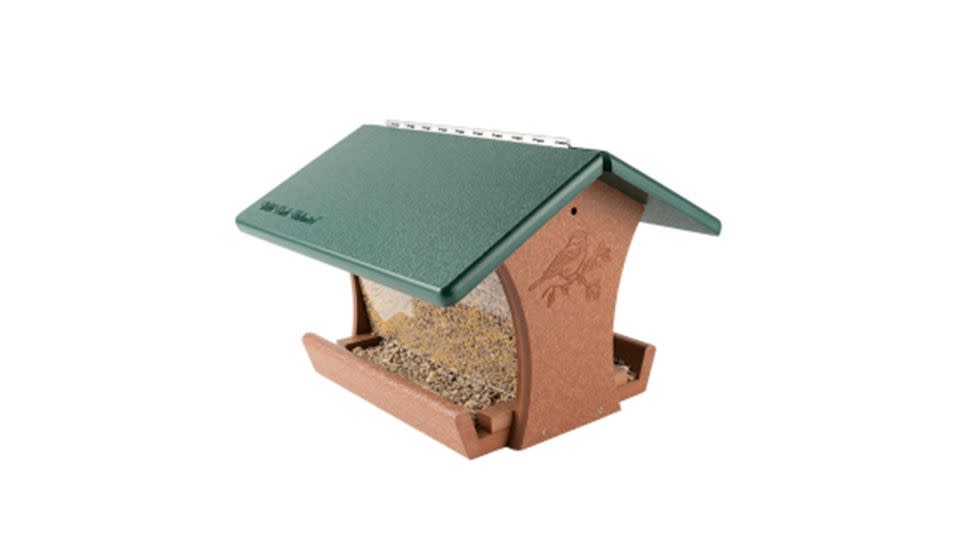
To accommodate large birds, this hopper-style feeder has spacious perches on both sides. It’s easy to fill and clean thanks to its hinged lid and it’s crafted from heavy-duty recycled materials that can withstand any weather.
Best bird feeder: Brome Squirrel Solution 200
$90 $85 at Amazon
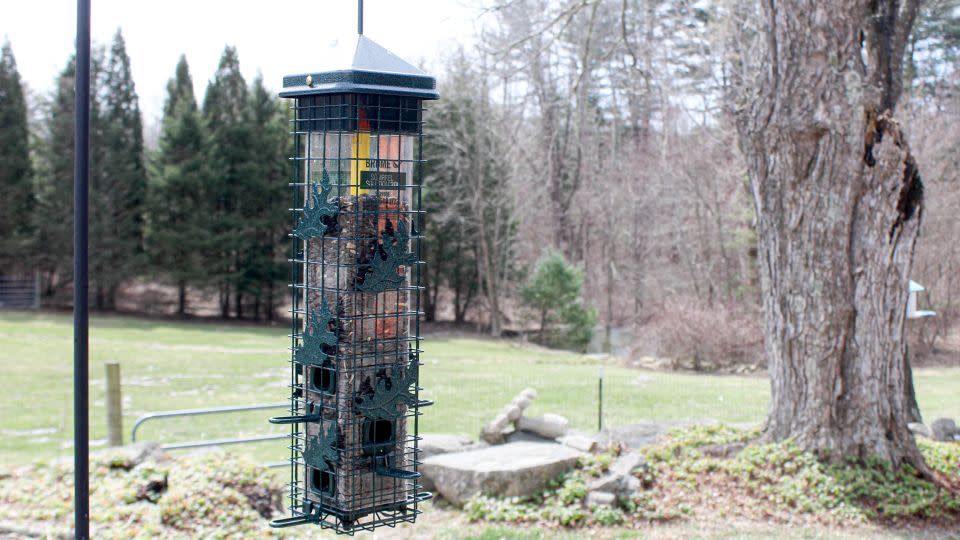
If you’re looking for a feeder that’s easy to use and will attract lots of birds — while keeping away unwanted pests — the Brome Squirrel Solution 200 is a top choice. It was one of the birds’ favorite feeders throughout the course of testing, attracting a wider range of species than other feeders, and every aspect of its design is thoughtful and easy to use.
The tube-style feeder is sturdy and durable due to its mostly metal construction, and it can hold up to 3.4 pounds of bird food at a time. Even with all the bird activity in my yard, I only needed to refill it around once a week. It has six feeding ports with spacious perches for birds to land, and the design did a good job of minimizing waste compared to a few other feeders, which often dumped seed onto the ground. The Brome feeder was a hot spot for goldfinches, chickadees and titmice, and it also attracted larger songbirds like bluebirds and cardinals, which couldn’t fit on other tube feeders we tested. I also frequently saw several species of birds using the feeder at once.

In addition to being popular among the birds, this feeder has a thoughtful design that made it easy for me to use. It comes with a yellow funnel that lets you fill it without spilling seed, and the funnel actually snaps onto the bottom of the feeder if you want to store everything together. The metal lid is held in place by a button, keeping pesky squirrels from breaking in, and the feeder has a unique metal cage around its central seed tube that slides up and down. The cage isn’t affected when birds land on the perches, but if a squirrel climbs onto the feeder, the cage slides downward, covering up the ports to stop them from getting a free snack. Sadly, I didn’t get to see the cage in action, as my resident squirrel didn’t seem interested in the feeder, but it slid smoothly when I tested it, springing back open when released.
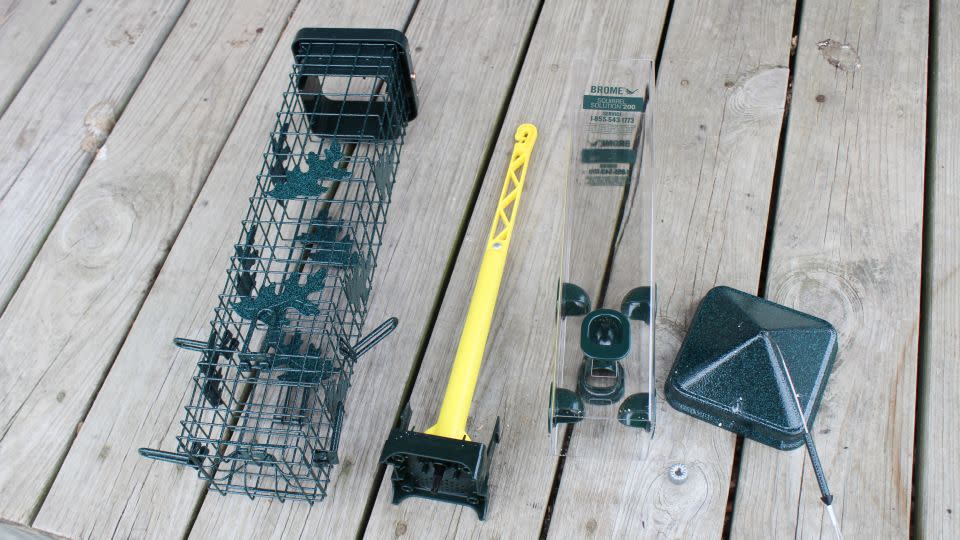
The Brome also stood out from other tube feeders thanks to its ease of cleaning. There’s a screw on the bottom of the feeder that you can twist off by hand to remove the outer cage from the inner feed tube. The central support can be popped out as well, allowing you to thoroughly clean all the feeder’s components. It goes back together just as easily — no tools required.
If you’re looking for an all-around bird feeder, the Brome Squirrel Solution 200 should be your pick. It’s easy to fill, it’s easy to clean and it can accommodate many types of birds for your viewing pleasure.
Best hopper bird feeder: Wild Birds Unlimited EcoTough Classic Feeder
Prices vary at Wild Birds Unlimited
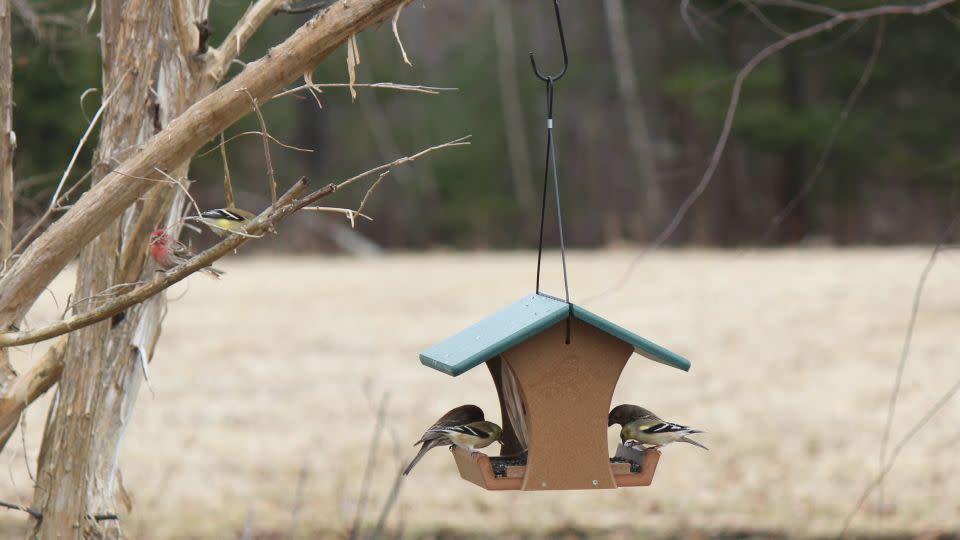
Hopper-style bird feeders have larger perches than tube feeders, so they can attract a wider range of birds, including larger species. The EcoTough Classic Feeder was the best hopper feeder that I tested; it’s highly durable and one of the easiest to fill. It was also popular with the birds, and I often saw four or five eating from it at the same time. Its frequent patrons included goldfinches and house finches, bluebirds, cardinals, chickadees, titmice and even the occasional woodpecker, which would hang off the side of the perch.
This feeder is actually manufactured from recycled plastic milk jugs, and it’s available with either a green or red roof, as well as several different sizes. The roof and walls are thick and durable, and the brand claims the material won’t crack, fade or rot. The sides of the feeder are made from a thick layer of acrylic so you can see the feed level inside, and the bottom is a removable screen that’s perforated to allow moisture to drain. I particularly liked that the roof of this feeder has a large overhang that covers the seed trays below, preventing them from getting wet when it rained or snowed.

The hopper feeder has large seed trays on both sides, which provide enough space for multiple birds to eat at the same time, and the hopper itself can hold up to 2.5 quarts of seed. To fill it, you simply tilt up one side of the roof, which has a hinge down the middle, and pour in the seed. It’s easy to do by yourself, and I never had any issues with spilling. Unlike other hopper feeders, the EcoTough has small openings on both sides of the perches that the brand calls “perch drains,” which allow seeds and empty shells to fall out of the trays more easily. This prevents shells from building up inside the feeder, and it also helps attract ground-feeding birds. True to its claim, I noticed there were more juncos around this feeder than others I tested at the same time.
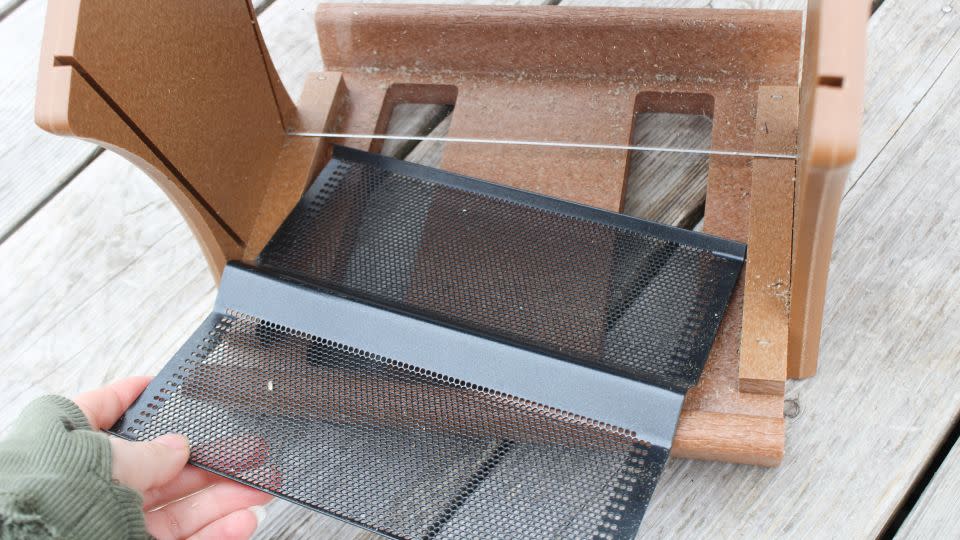
The EcoTough also proved to be easier to clean than other hopper models — a common problem with this style of bird feeder. When the lid is open, you can slide out one of the acrylic hopper walls and remove the mesh bottom. This gives you easy access to the inside of the feeder for a quick scrub, and everything slides right back together when you’re done.
If you want to attract larger birds, the EcoTough Classic Feeder was the best hopper bird feeder we tested. Thanks to its ease of use, durability and size, it’s a welcome addition to any backyard.
What are the different kinds of bird feeders?
The main types of bird feeders include tube, hopper, platform and suet. Each style has its own benefits and attracts certain types of birds. “Different bird species are attracted to different feeder designs thanks to their biology and what food sources they eat in the wild,” explains Chad Witko, senior coordinator of avian biology for the National Audubon Society’s Migratory Bird Initiative.
Tube: Easy to identify by their tall, narrow form, tube feeders are one of the most popular styles of bird feeder. They generally have several ports with perches where birds can sit, and they can be filled with any type of bird seed. “Tube feeders attract smaller species, particularly finches, especially if they are filled with finch favorites like sunflower seeds or thistle,” Witko says. Larger tube feeders can also accommodate bigger birds like cardinals, titmice and bluebirds.
Hopper: Hopper feeders, also called house feeders, are attractive to a wider range of birds, as their perches provide enough room for bigger species to land. They have a roof that helps to keep the seed dry, and they often have a larger capacity than tube feeders.
Platform: As their name suggests, platform feeders are just an open tray that allows any bird to feed. “Birds like jays, doves, grosbeaks and some sparrows prefer large platform feeders,” says Witko, who notes that tray feeders near the ground may also attract quail or other ground species in certain locations.
Suet: These feeders typically have a square-shaped cage designed to hold a block of suet, which is typically a mixture of fat and seeds. Suet is particularly appealing to woodpeckers but can also attract nuthatches, titmice, chickadees and wrens.
Not sure what kind of feeder to get? A tube feeder is often the best place to start. “You can’t go wrong with a simple tube feeder filled with black oil sunflower seed, which is leagues ahead of other types as the best seed to offer,” Witko says. “However, for those looking for more birds, an array of tray, hopper, tube and suet feeders is more than enough to draw in most native feeder birds wherever you may live.”
Where is the best place to put a bird feeder?
To attract birds and keep them safe while they eat, you’ll need to find the right location for your feeder. It’s generally best to put feeders near brush or tree cover so they have a place to perch between trips to the feeder and hide from predators, and you’ll also want to consider how close it is to your house. “You can help make your garden a bird-friendly, safe space and minimize the risk of window collisions by placing your feeder less than 3 feet or greater than 10 feet from your house,” Witko says. “These distances significantly reduce the impact or likelihood of fatal window collisions.”
How to maintain a bird feeder
If you’re going to put bird feeders or birdbaths in your yard, it’s important to care for them properly. “Regular cleaning of bird feeders is essential to maintain hygiene and prevent the spread of diseases among birds,” Witko says. For this reason, our experts recommend selecting feeders that can be easily disassembled for quick and thorough cleaning.
Ideally, you should wash your bird feeders every two to four weeks using soap and warm water, making sure to clean the inside, outside, seed ports and perches. If you notice any mold or mildew growth, you may want to use a stronger cleaning solution. “Consider rinsing with a mild solution of 1 part bleach to 9 parts water,” Witko recommends. “Dry completely before refilling and hanging.”
How we tested
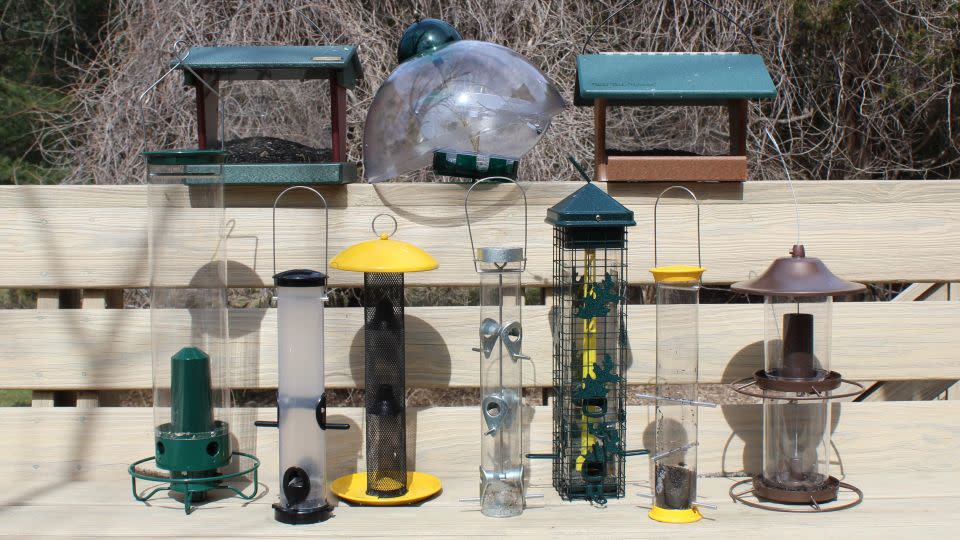
To figure out which bird feeders are worth adding to your yard, we put a total of 10 models through a series of tests, evaluating them on their design, ease of use, performance and ease of maintenance. Here are all the tests we ran for each bird feeder:
Setup
Assembly: After unboxing each product, we put them together according to the instructions. Some arrived fully assembled, while others needed to be screwed together and/or charged before use. For products that required setup, we considered whether the instructions were clear and easy to follow and if any special tools were needed.
Ease of filling: For the majority of the feeders, we used black oil sunflower seed (a popular choice with most birds), but we put small Nyjer seeds in the two thistle feeders. While filling them, we looked at whether it was easy to pour seed inside, how much seed spilled during the process and if the lid was easy to remove and put back on.
Design
Capacity: We compared the maximum capacity of each bird feeder, noting how much seed it could hold, how often it needed to be refilled and if seed spilled on the ground while birds used it.
Material quality: We evaluated the quality and build of each bird feeder. We noted whether they were made from metal, plastic or another material, and whether it was thick or thin. Because these products live outside, we also looked for materials that are weatherproof and stabilized against UV rays to prevent color fading and deterioration.
Attractiveness: Some bird feeders have a utilitarian design, while others are more stylish with decorative accents. We considered the appearance of each bird feeder and whether we thought it was an attractive addition to the yard.
Sturdiness: We set up each bird feeder on a shepherd’s hook, noting if it was easy to hang up and take down, and we left each model up for a few weeks to evaluate its sturdiness. We noted whether the feeders swayed in the wind and if they were ever blown off their perch.
Performance
Appeal: Once the feeders were set up, we let the birds be the judge (after all, they’re the ones who will be using the feeders). I set the products up around my yard, mounting them in areas where I know birds frequent. The birds started using some feeders right away, while others took them a while to warm up to. We noted whether the feeders were intuitive for birds to use and which models they gravitated toward first.
Bird variety: Over the course of two weeks, I monitored the feeders throughout the day, noting what kinds of birds visited each model. Some designs attracted a variety of birds, while others appealed predominantly to one or two species.
Security: We noted which feeders had squirrel-deterrent features and how well they seemed to work.
Ease of cleaning
Disassembly: It’s important to keep bird feeders clean to prevent the spread of diseases, so we took apart each model to see how easily it can be cleaned. Some designs were simple to open, thanks to hinges and removable parts, while others proved to be difficult (if not impossible) to disassemble and wash out.
Other bird feeders we tested
Wild Birds Unlimited EcoClean Seed Tube Feeder
$60 at Wild Birds Unlimited
The EcoClean Seed Tube Feeder is another one of the best tube feeders we tested. It’s available in several sizes, ranging from S to XL, and in testing, it proved to be a popular choice for smaller bird species like chickadees and finches.
The feeder has thick translucent walls with metal seed ports and perches, and its Quick-Clean design lets you pop off the bottom for easy maintenance. It was much faster and more convenient to wash out than other tube feeders, and the design felt sturdy and durable. The only caveat is that it doesn’t offer any type of protection against squirrels, so you may need to employ a baffle if you want to keep them away.
DutchCrafters Hanging Bird Feeder
$60 at Amazon
The DutchCrafters Hanging Bird Feeder is another hopper-style model that comes in two sizes and a range of color combinations. It’s crafted from plastic resin made from recycled bottles, and it was large enough to accommodate all sorts of birds, including sought-after species like cardinals and mourning doves. The roof tilts off to the side, allowing you to fill its inner hopper, but the mechanism was stiff and required a bit of muscle to open and shut. The bottom of this feeder isn’t removable either, and the whole thing is quite heavy, especially when filled with seed.
Perky-Pet Straight-Sided Thistle Feeder
$30 $25 at Amazon
Despite its low price, this thistle feeder from Perky-Pet is the only bird feeder I tested that was crafted completely from metal components. It has mesh sides that attract clinging birds like goldfinches, and it has a wide catch tray that prevents loose seeds from falling on the ground. The top and bottom are easy to remove, making cleaning a breeze, but there are a few caveats regarding the design. When I filled this feeder with thistle, many of the small seeds fell through the mesh, creating a mess on the ground around me. Additionally, I only ever saw goldfinches using this feeder, so it’s not the best if you want to attract a variety of birds.
Droll Yankees Finch Flocker
$40 $34 at Amazon
Another thistle feeder, the Finch Flocker has clear plastic sides that contain the small seeds easier than the Perky-Pet version, making it easier to fill. The birds didn’t like this feeder as much, though. The seed ports are just tiny holes in the plastic and are hard for birds to find. I also noticed condensation forming on the inside of this feeder, which may lead to mold growth. The bottom of the feeder isn’t removable either, so this model will ultimately be more challenging to keep clean.
Droll Yankees Classic Seed Bird Feeder
$52 at Amazon
This feeder from Droll Yankees has a basic tube design made from see-through plastic and metal seed ports. The birds took to it quickly (likely because I’ve used similar feeders in the past), but it wasn’t as user-friendly for me. The feeder is lightweight with a small opening on top, making it hard to fill using only one person, and while it was hanging in my yard, a lot of the seed spilled out, resulting in a big pile on the ground underneath the feeder. This feeder is also complicated to disassemble, especially when compared to several of the other tube options I tested, and overall, I think there are better options out there.
Droll Yankees Big Top
$70 at Amazon
Specifically designed to deter squirrels, the Big Top has an oversized plastic dome that protects the inner seed tray, which can hold around 0.5 pound of seed (less than most other feeders). I liked that you can adjust the height of the dome to allow different sized birds to get inside, and you can also adjust the bottom to control how much seed is dispensed. The problem is that if birds go inside the dome, they tend to sit there for a while while eating, which results in them pooping on the food and making a mess. However, if you opt to lower the dome, the feeder can only be used by clinging birds that can hang off the bottom, as there aren’t perches for others to land on.
Perky-Pet 2-Tier Panorama Wild Bird Feeder
$36 at Amazon
This tube feeder from Perky-Pet has a cool design with two tiers, each of which has a wraparound perch and seed tray. While I liked the overall idea, I immediately ran into problems with the design. It was challenging to fill, and I would often end up removing the base when I was trying to take off the top. Once I did get it filled, I noticed that sunflower seeds tend to get stuck under the lip of the feeder, preventing them from falling into the seed trays. After a week of use, the feeder was still almost completely full, as birds couldn’t get the seeds out of it.
Droll Yankees Flipper
$165 $151 at Amazon
The most high-tech option I tested, the Droll Yankees Flipper has an extra-large capacity and battery-powered base that’s designed to keep squirrels away. Once charged, the base spins if it senses too much weight, sending squirrels flying. It seems like a good idea in theory, but the Flipper quickly proved to be more hassle than it’s worth. First, the battery can only be left on the charger for two to five hours at a time, per the instruction manual — any longer and it may impact the battery life. This is inconvenient if you tend to forget items while they’re charging (I know I do). The base also doesn’t attach to the feeder securely and fell off while I was trying to hang it up.
The birds weren’t big fans of this feeder either. I rarely saw any on it, and after a few days, I figured out why: If two (or more) birds landed on the perch at the same time, they often triggered the weight sensor, causing the base to spin. I saw several birds get tossed off the feeder while trying to eat, so it’s really no surprise that they stopped using it.
Note: The prices above reflect the retailers' listed price at the time of publication.
For more CNN news and newsletters create an account at CNN.com

